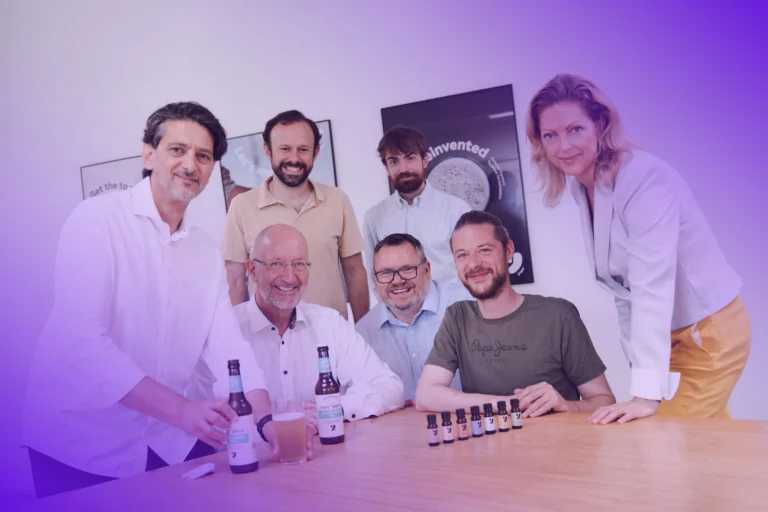

University of Tokyo team demonstrates scalable bioreactor system for whole-cut cultured meat production
A research team from the University of Tokyo has developed a novel biofabrication platform that enables the production of centimeter-scale, perfused cultured meat using hollow fiber bioreactors (HFBs). The platform, designed for consistency, scalability, and high cellular density, may represent a key breakthrough in the industrial-scale production of whole-cut cultivated meat and engineered tissues.
The team, led by Professor Shoji Takeuchi and colleagues Minghao Nie, Ai Shima, and Mikihisa Yamamoto, addressed long-standing limitations in traditional HFB systems, which typically result in inconsistent tissue morphology and necrosis due to uneven nutrient distribution. By arranging semipermeable hollow fibers in a highly uniform, microfabricated lattice structure, they achieved a significant improvement in nutrient and oxygen delivery. The system supports the formation of structurally and functionally mature muscle tissue with minimal necrotic regions – an important step forward in the production of high-quality cultured meat.
“Our goal was to develop a scalable, automated method that maintains cell viability and enables the production of muscle tissues with consistent alignment, structure, and function,” said Takeuchi. “This work demonstrates the feasibility of engineering thick, perfused tissues with properties comparable to traditional meat.”
The core innovation lies in the team’s design of a tightly packed array of hollow fibers held in place using stereolithographically printed micro-anchors. These semipermeable fibers serve as internal conduits for nutrient-rich culture media, delivering oxygen and removing waste throughout the tissue via active perfusion. By precisely controlling the spacing – each fiber was separated by approximately 699 micrometers – the team ensured that all cells remained within the critical diffusion distance needed to maintain viability.
The researchers demonstrated that applying positive pressure through the fibers increased perfusion efficiency, reduced necrosis, and promoted the differentiation of chicken muscle cells into aligned, functional myotubes. Immunostaining confirmed improved sarcomere formation and myosin expression in tissues cultured under perfusion compared to static conditions. Additionally, electrical stimulation showed contractile activity, a hallmark of functional muscle tissue.
The platform also yielded notable improvements in texture and flavor. Texture profile analysis indicated firmer, more structured tissues under perfusion, while free amino acid analysis revealed higher levels of sweetness- and umami-related compounds. These sensory attributes are essential for cultured meat to match conventional products in consumer perception.
To scale beyond laboratory settings, the team integrated robotic automation into the system. Using a pneumatically assisted fiber-threading mechanism, they successfully assembled an array containing 1,125 hollow fibers – roughly 20 times larger than earlier prototypes. The resulting bioreactor produced a 10-gram piece of whole-cut cultured chicken meat using a robust fibroblast cell line (UMNSAH/DF-1), avoiding the need for animal biopsies.
Computed tomography confirmed consistent fiber distribution across the entire volume of the bioreactor. Perfusion culture over five days showed substantial glucose uptake and lactate production, highlighting the tissue’s metabolic activity and the platform’s potential for supporting high cell densities.

Despite these successes, challenges remain. High internal perfusion pressures can lead to bubble formation if media withdrawal rates are not properly balanced. Additionally, while the team used 3D-printed and research-grade materials, future commercial applications will require food-grade or medical-grade alternatives to ensure safety and compliance.
While the system was developed with cultured meat in mind, its implications extend far beyond food. The ability to fabricate large, perfused tissues has applications in regenerative medicine, drug screening, and the creation of biohybrid actuators for robotics. The team noted that future enhancements could include stretchable hollow fibers to mimic physiological movement, and edible fiber materials to simplify post-culture processing.
“Current approaches to cultured meat rely heavily on modular assembly, where small pieces of tissue are glued or fused together,” explained the authors. “Our top-down strategy, using embedded perfusable channels from the outset, offers a more consistent and scalable pathway to producing whole cuts with authentic texture and aligned muscle fibers.”
They also emphasized the need for further work on oxygenation, cost-effective media, and regulatory pathways. As cell densities increase and tissue sizes grow, maintaining metabolic balance becomes increasingly complex. Innovations such as oxygen-enriched media or artificial blood analogs could help address these limitations.
With global interest in alternative proteins continuing to grow, the development of technologies that enable consistent, scalable, and cost-effective cultured meat production is critical. The perfusable hollow fiber array developed by the University of Tokyo team may represent a key enabling step toward commercial viability.
Their findings underscore that advanced bioreactor design, supported by automation and engineering precision, can overcome some of the most persistent obstacles in cultured meat biofabrication. Future iterations of the system, they suggest, could lead to fully automated production platforms capable of generating tens or hundreds of grams of structured tissue in a single run.
The team’s full study is published in Trends in Biotechnology and includes extensive supplemental material detailing the design, assembly, and performance of the hollow fiber bioreactor system.
If you have any questions or would like to get in touch with us, please email info@futureofproteinproduction.com


-p-800.jpg)



